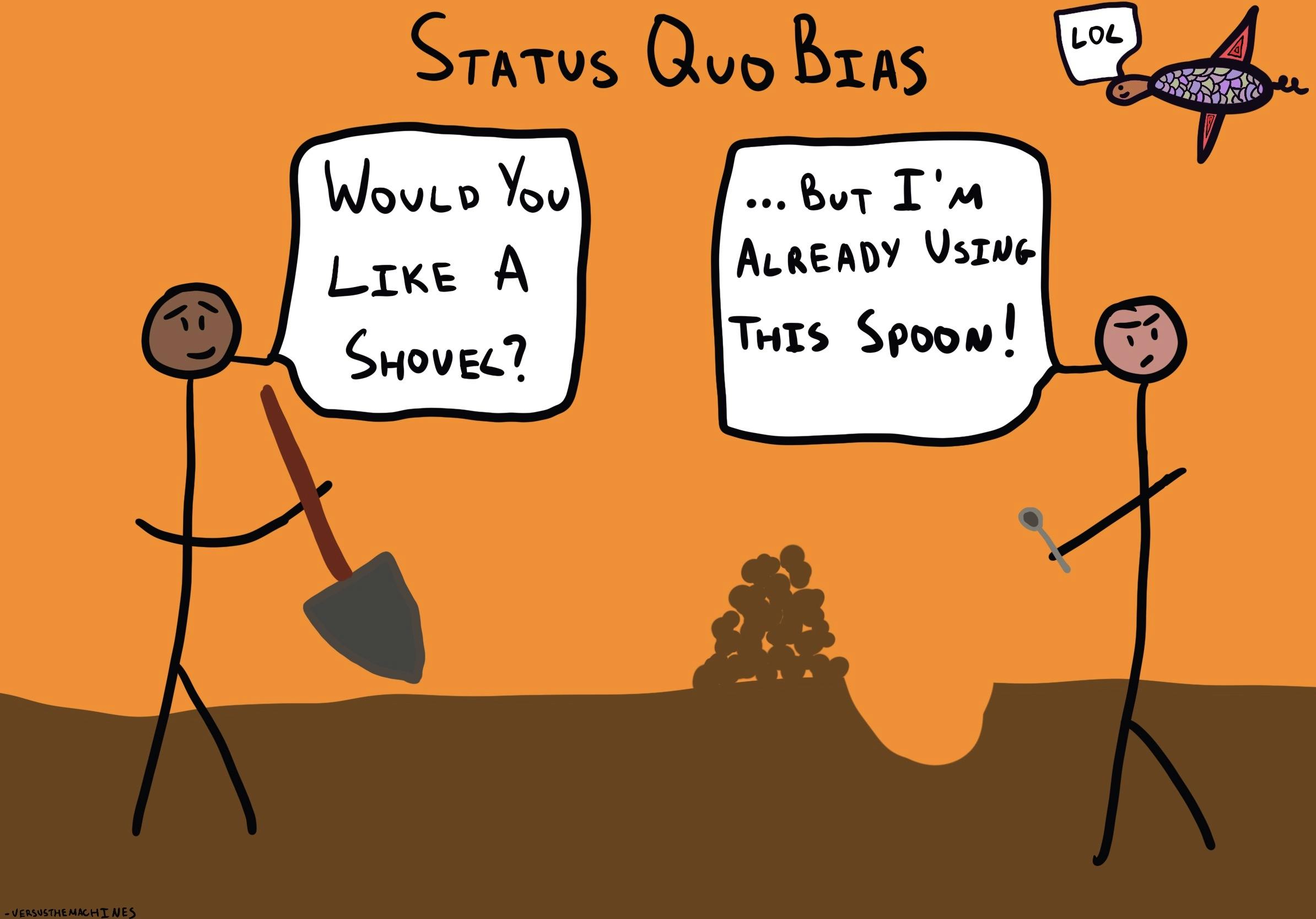¿Por qué tendemos a dejar las cosas como están?
¿Qué es el sesgo del statu quo?
El sesgo del statu quo describe nuestra preferencia por el estado actual de las cosas, lo que provoca resistencia al cambio.

Dónde se produce este sesgo
Sam es una estudiante universitaria que se prepara para empezar un nuevo semestre. Su centro de estudios inscribe automáticamente a los estudiantes en un seguro médico y dental. Por supuesto, existe la opción de darse de baja, lo que reduciría el importe total de su matrícula. Sam ni siquiera está segura de si necesita o no un seguro médico, pues puede que ya esté cubierta por alguno de los planes de sus padres. Sin embargo, no se lo piensa mucho y paga la matrícula de todos modos.
Este es un ejemplo del sesgo del statu quo, porque Sam decide dejar las cosas como están en lugar de investigar más y optar por el seguro médico. Si las cosas fueran al revés, y la escuela no incluyera automáticamente el seguro en el total de las tasas, probablemente muchos menos estudiantes optarían por estar cubiertos. Sin embargo, el centro utiliza el sesgo del statu quo a su favor, pues sabe que los estudiantes son más propensos a mantener el plan original en lugar de esforzarse por pagar menos.